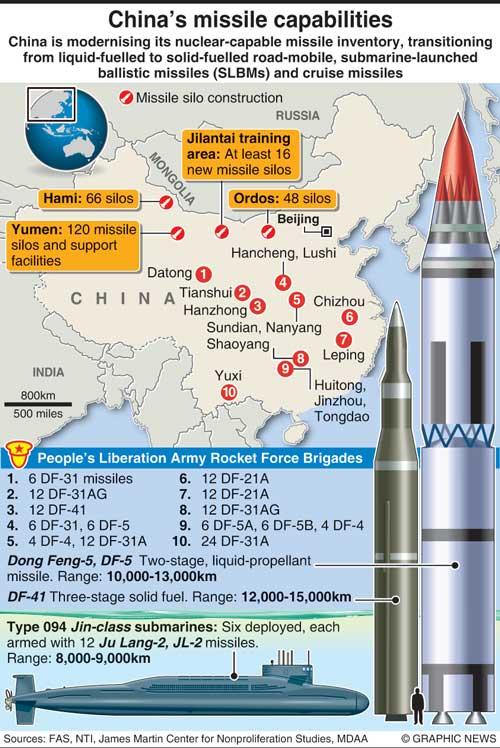Reply To:
Name - Reply Comment
 Cooperation, not Cold War, is what the world urgently needs to overcome multiple crises of gargantuan proportions, with the COVID-19 pandemic, climate change and the global economic downturn being the most pressing issues.
Cooperation, not Cold War, is what the world urgently needs to overcome multiple crises of gargantuan proportions, with the COVID-19 pandemic, climate change and the global economic downturn being the most pressing issues.
It is heartening to note that world leaders do speak of the gravity of these problems and call for concerted global efforts to find solutions to these burning issues. Yet their call for cooperation appears to stop at lip level. Their concerns over threats to humanity dissipate after they come out of global conferences such as the ongoing COP26 climate talks and walk into high-octane security rooms for national security talks.
 Theoretically speaking, nations pursuing power politics will not hesitate to weaponize the pandemic and even climate change to cause the downfall of their rivals. Perhaps, what prevents them from doing so is the realization that pandemics and climate change are no respecters of borders. They teach us a vital lesson for co-existence. We need to swim together to save humanity, as the school of small fish caught in the net saved themselves in the computer-animated adventure movie ‘Finding Nemo’.
Theoretically speaking, nations pursuing power politics will not hesitate to weaponize the pandemic and even climate change to cause the downfall of their rivals. Perhaps, what prevents them from doing so is the realization that pandemics and climate change are no respecters of borders. They teach us a vital lesson for co-existence. We need to swim together to save humanity, as the school of small fish caught in the net saved themselves in the computer-animated adventure movie ‘Finding Nemo’.
The latest call for cooperation between rival powers came on Tuesday from China’s President Xi Jinping, who is well on his way to become a Mao Zedong-like leader. It came a week before a virtual summit between Xi and US President Joe Biden, while the countries they lead are embroiled in a slew of disputes, some of which could trigger the next world war. The two leaders have not met since Biden took office.
President Xi’s message of cooperation came in a recorded video message to a business forum on the sidelines of the Asia-Pacific Economic Cooperation (APEC) summit in New Zealand. The message preceded an agreement between China and the United States to set up a working group to tackle climate change in the short term and a promise to meet regularly to address the crisis.
“Right now, China-US relations are at a critical historical juncture. Both countries will gain from cooperation and lose from confrontation,” Xi told the APEC forum, insisting that cooperation was the only right choice.
“China stands ready to work with the US to enhance exchanges and cooperation across the board, jointly address regional and international issues as well as global challenges and, in the meantime, properly manage differences,” Xi said.
As often seen, the world leaders’ words are seldom turned into action. This is because power politics they pursue is all about one-upmanship.
The United States has, in recent months, upped the ante vis-à-vis China. Together with the United Kingdom, the US signed a deal with Australia to strengthen Canberra’s nuclear submarine capabilities. That the deal known as AUKUS is targeted at China is no big secret. Also the US is taking measures to institutionalize the informal Quadrilateral Security Dialogue or the Quad comprising, apart from the US, India, Japan and Australia. The Quad leaders had a summit on the sidelines of the recent United Nations General Assembly sessions in New York and the security cooperation the Quad envisages covers the entire Indo-Pacific region. The term Indo-Pacific region gained geopolitical currency only in the past decade or so, after the US succeeded in wooing India, giving it equal leadership role to check China’s attempts to dominate the Indian Ocean region, especially the South Asian sea area.
In the meantime, China has increased its assertive diplomacy and aggressive manouevres in the South China Sea region. In recent weeks china made a record number of incursions near Taiwan which it insists is part of China, while modernizing its nuclear arsenal and military capabilities.
Although President Xi in his message to the APEC forum called on the US not to create a Cold War like tension in the Asia-Pacific region, the ground realities indicate that the two countries are already carrying out hybrid warfare targeting each other. Hybrid warfare, an emerging but ill-defined notion in conflict studies, refers to a multi-domain conflict approach, with a calculated use of conventional and non-conventional means to disrupt and disable an opponent’s actions without engaging in open hostilities. The Cold War that existed between the US and the Soviet Union was also similar to hybrid warfare between China and the US, the exception being that the Cold War rivals fought many wars through proxies while continuing their campaign to spread their political and socio-economic ideologies.
Be it hybrid warfare or cold war, the assumption that nuclear powers do not go for all-out war gives some assurance to the people of Asia that they need not worry too much about the Third World War happening in their midst.
However, Asia’s people, especially those in countries vulnerable to big power manipulation, have already become victims of the power-politics or the games the big powers play in the Indo-Pacific region.
Cold War like tension or hybrid warfare certainly increases the defence expenditure of those nations that pursue power political ambitions. At a time when the COVID-19 pandemic is ravaging people’s lives, especially those in poor countries, money spent on buying or developing sophisticated killer weapons should be diverted towards helping poor nations to buy vaccines.
While most rich countries have achieved full vaccination targets, more than 50 poor countries have vaccinated less than 25 percent of their people. The countries with the lowest incomes generally have the lowest Covid-19 vaccination rates. The rich poor gap is killing thousands of unvaccinated people in poor nations.
The China-US cooperation moves as seen in yesterday’s COP26 consensus should be extended to South Asia and other regions. While China calls on the US to take steps to defuse tension in the Asia-Pacific region, there should be Sino-Indian cooperation talks to bring about South Asia’s dream of making the Indian Ocean a zone of peace.
If India and China can become partners in BRICS, and work as members in the Beijing-led Asian Infrastructure Investment Bank, there is no reason why they cannot become partners in an initiative to make the Indian-Ocean a peace zone and solve their border disputes amicably. The fact that trade between India and China has now reached US$ 100 billion should be a harbinger for peace.
Forget the Quad, which is not a confidence-building measure for the Indian Ocean peace zone.